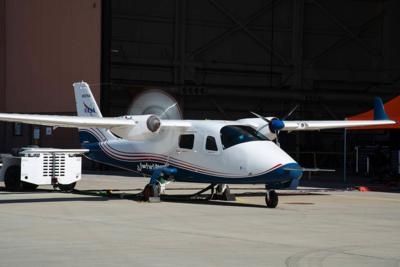Sun, Jul 09, 2023
X-57 Maxwell Ends X-Plane Program after Years of Developmental Woes
A modified Tecnam P2006T Traveller under the NASA X-Plane program has come to its end, sadly spending its entire life on the ground.

After an audio conference describing some of the lessons learned from the Maxwell project, NASA published an announcement stating that the "X-57 Maxwell all-electric aircraft project will conclude aircraft operational activities by the end of September, with documentation and close-out activities continuing for several months afterwards." The news is a blow to sustainable aviation enthusiasts, after months of coverage building up to a flight this fall.
Ultimately, the cancellation comes down to a safety of flight issue, with a host of niggling issues that all add up to a roster of custom, one-off solutions. Everything from batteries and motor controllers to control boards and shielding seemed to impede the Maxwell program from one month to another. Issues with EM interference, overheating batteries, and power inverters all fostered advancements that will provide a launchpad for future endeavors in the same vein - or so NASA says. Ever the optimists, they say that even a plane that never left the ground helped to push the aviation envelope.
“NASA’s goal is to drive innovation through groundbreaking research and technology development. The X-57 project team has done just that by providing foundational information to industry through lessons learned, and we’re seeing the benefits borne out by American commercial aviation companies that are aiming to change the way we fly,” said Brad Flick, director of NASA's Armstrong Flight Research Center in Edwards, California, where the X-57 aircraft was developed. “I’m incredibly proud of their tenacity and ingenuity as they led the way in advancing electrified propulsion. The future of electrified propulsion is possible because of their contributions.”
“They did things that had never been done before, and that’s never easy,” Flick said. “While we prepare to finish this project later this year, I see a long list of achievements to celebrate and an industry that’s better today because of their work.”
More News
He Attempted To Restart The Engine Three Times. On The Third Restart Attempt, He Noticed That Flames Were Coming Out From The Right Wing Near The Fuel Cap Analysis: The pilot repor>[...]
Make Sure You NEVER Miss A New Story From Aero-News Network Do you ever feel like you never see posts from a certain person or page on Facebook or Instagram? Here’s how you c>[...]
From 2009 (YouTube Edition): Leading Air Show Performers Give Their Best Advice for Newcomers On December 6th through December 9th, the Paris Las Vegas Hotel hosted over 1,500 air >[...]
Aero Linx: NASA ASRS ASRS captures confidential reports, analyzes the resulting aviation safety data, and disseminates vital information to the aviation community. The ASRS is an i>[...]
“For our inaugural Pylon Racing Seminar in Roswell, we were thrilled to certify 60 pilots across our six closed-course pylon race classes. Not only did this year’s PRS >[...]
 NTSB Final Report: Rutan Long-EZ
NTSB Final Report: Rutan Long-EZ ANN FAQ: Turn On Post Notifications
ANN FAQ: Turn On Post Notifications Classic Aero-TV: ICAS Perspectives - Advice for New Air Show Performers
Classic Aero-TV: ICAS Perspectives - Advice for New Air Show Performers ANN's Daily Aero-Linx (06.28.25)
ANN's Daily Aero-Linx (06.28.25) Aero-News: Quote of the Day (06.28.25)
Aero-News: Quote of the Day (06.28.25)



